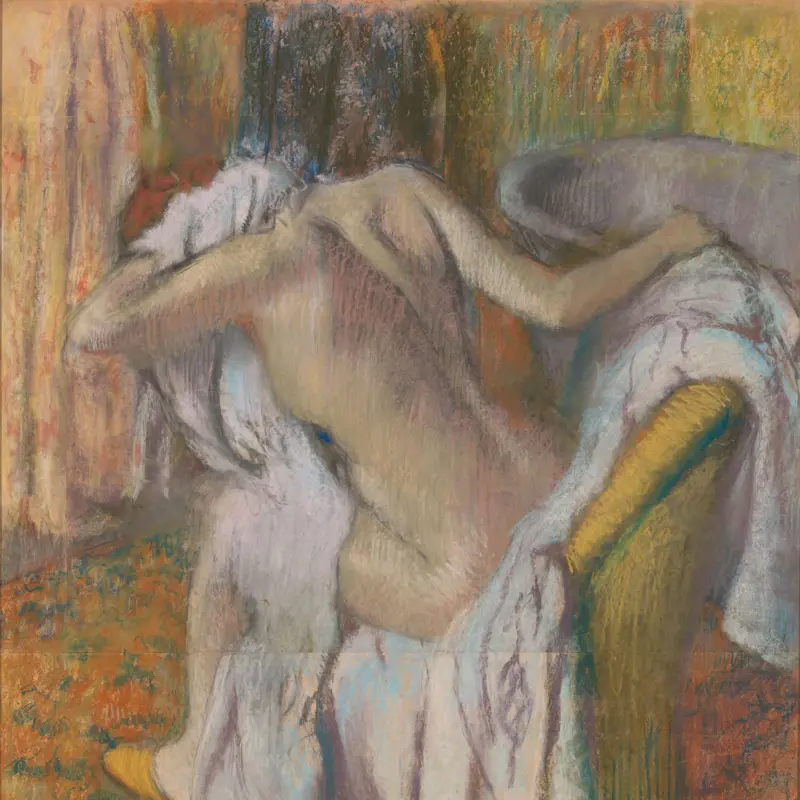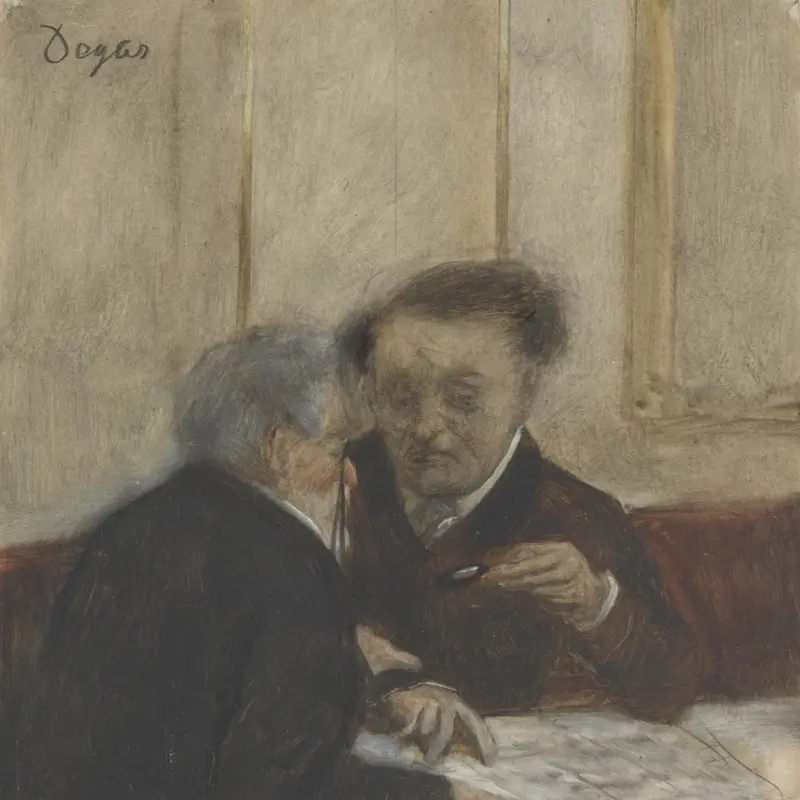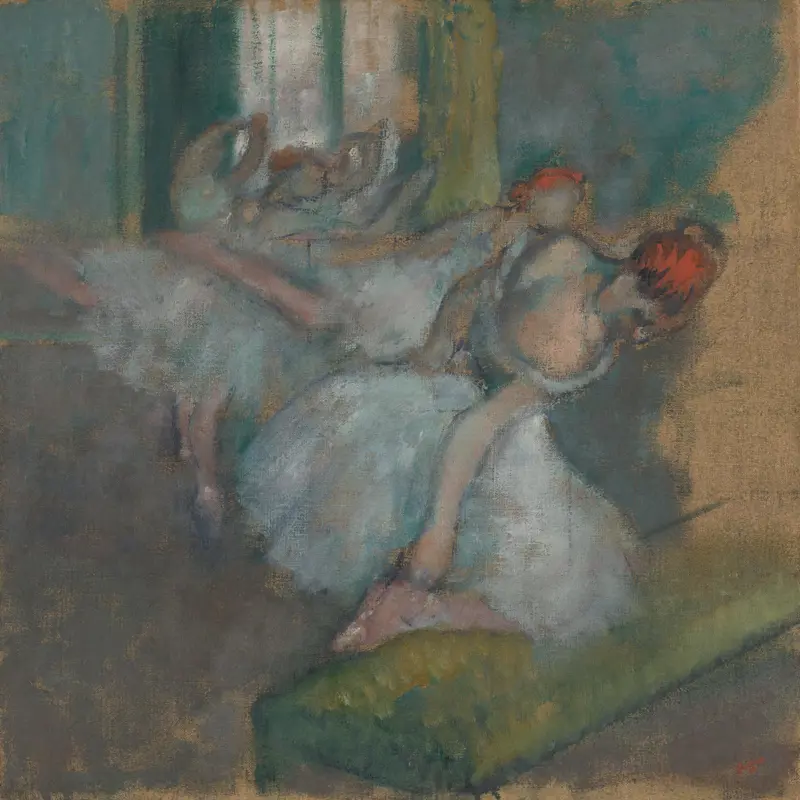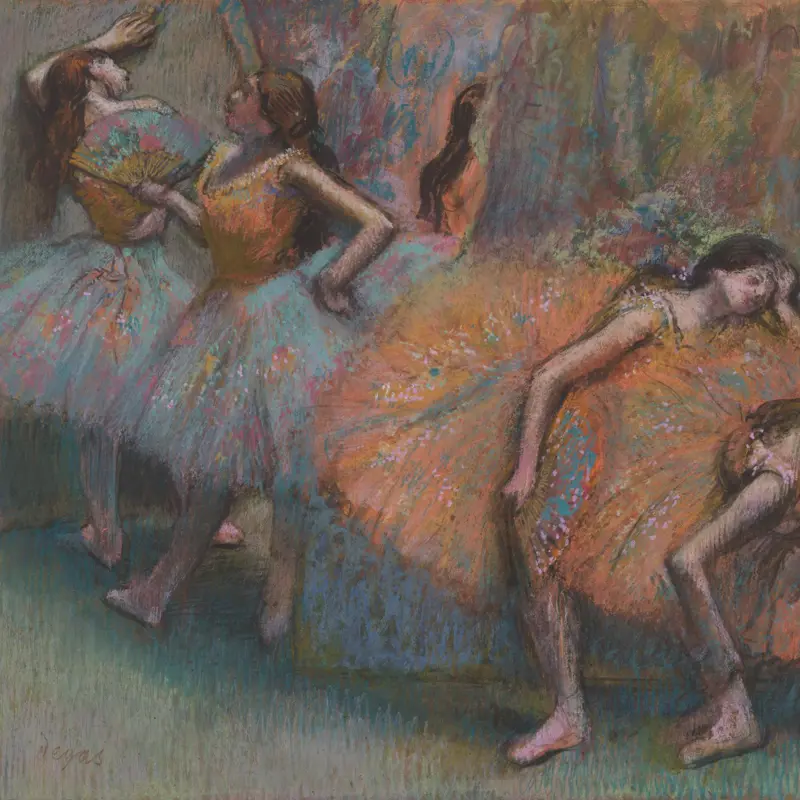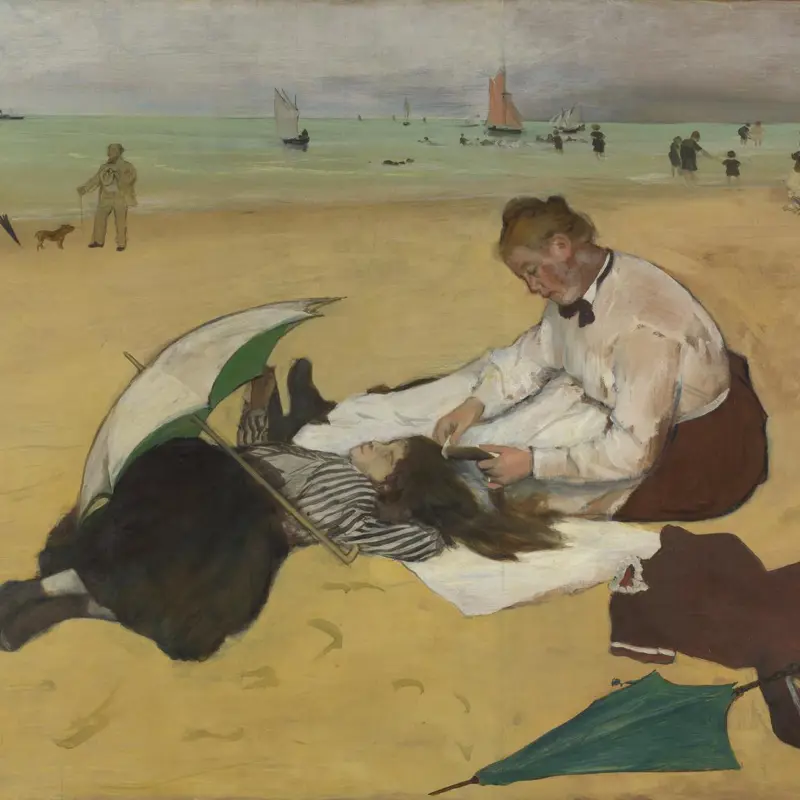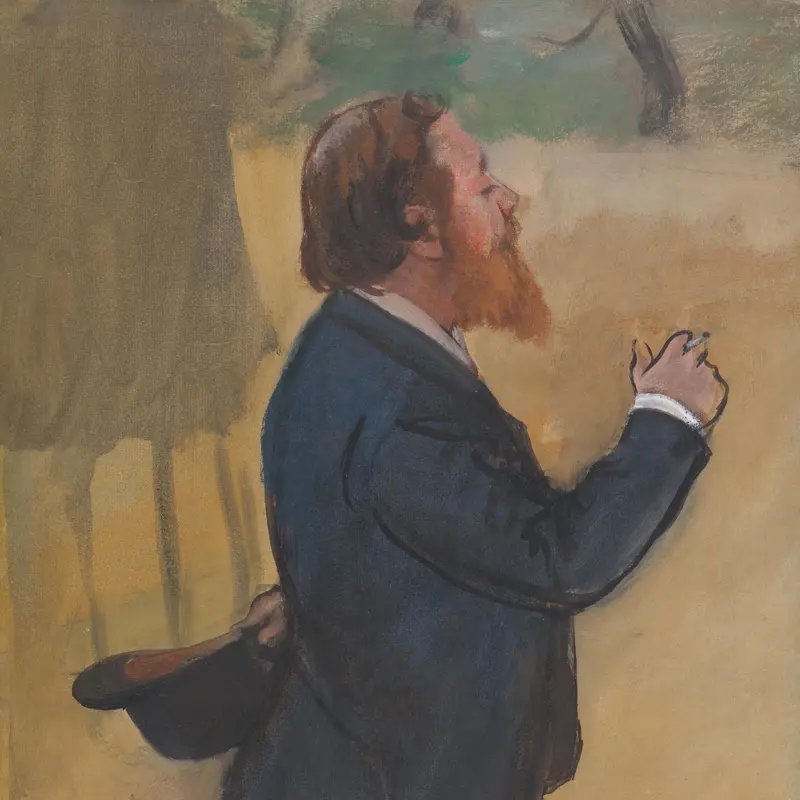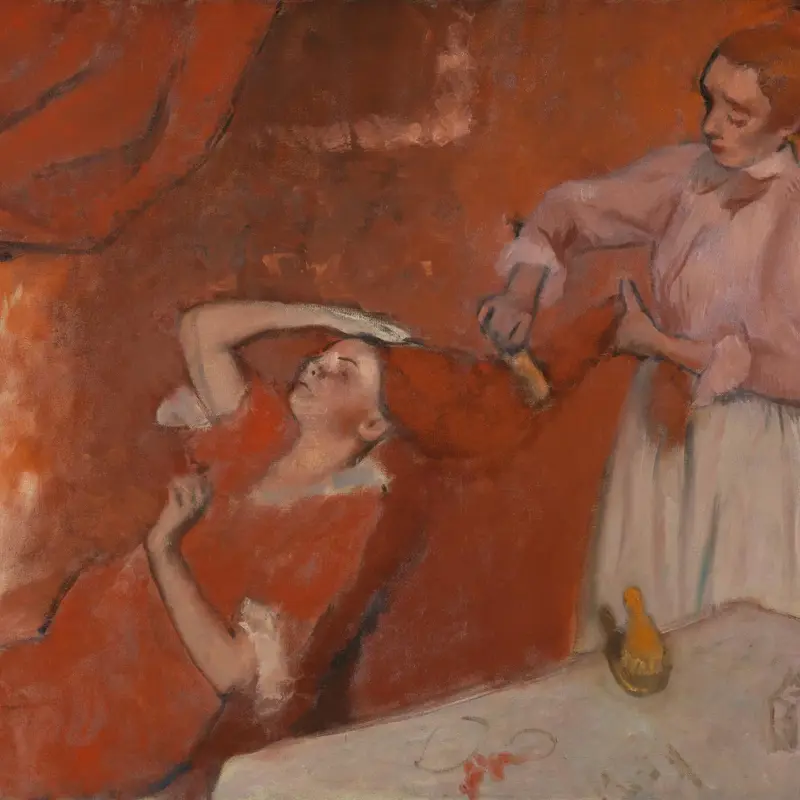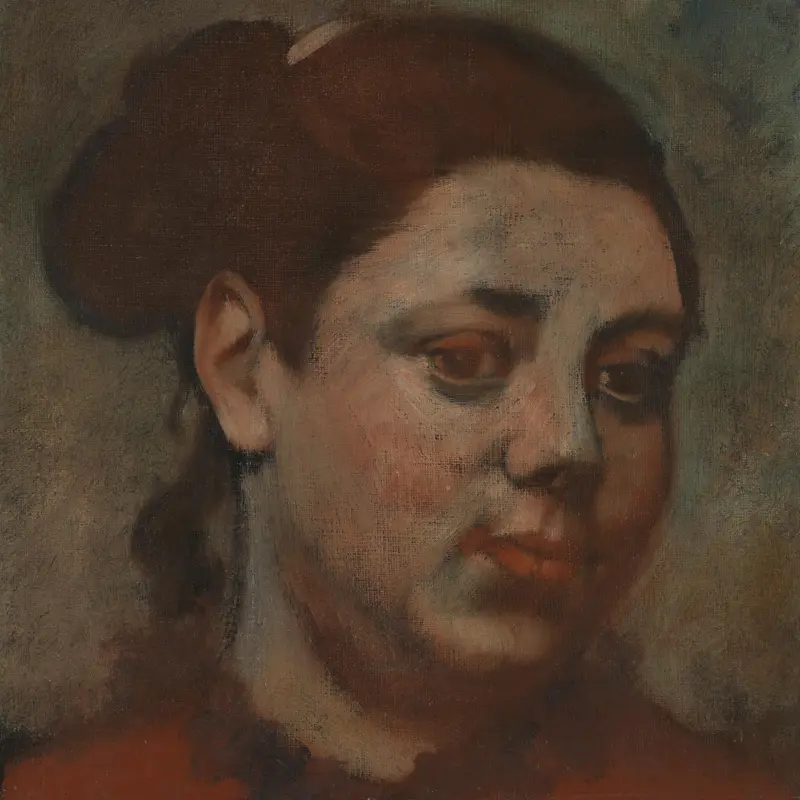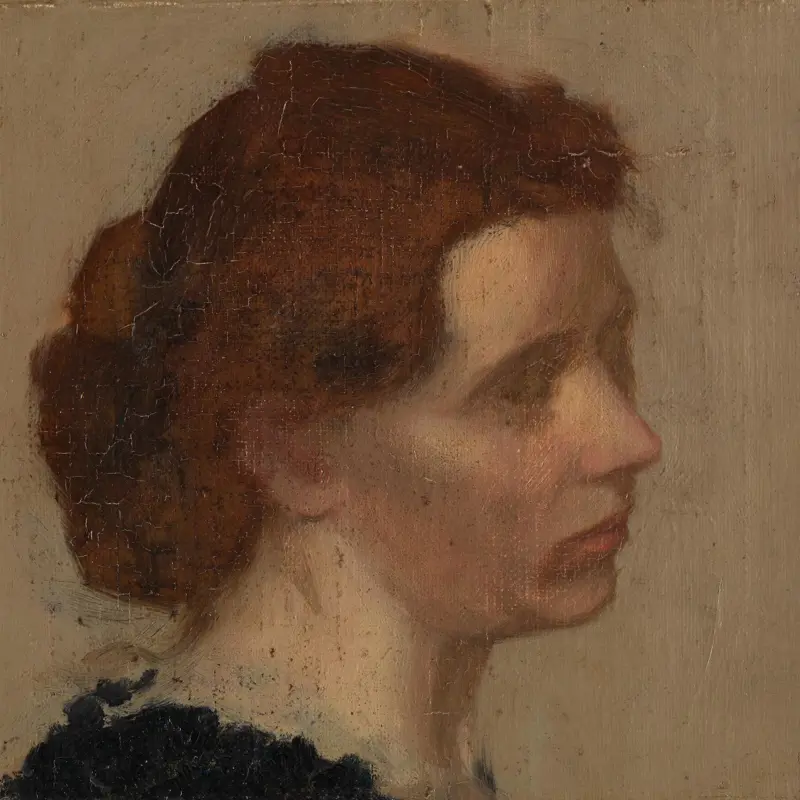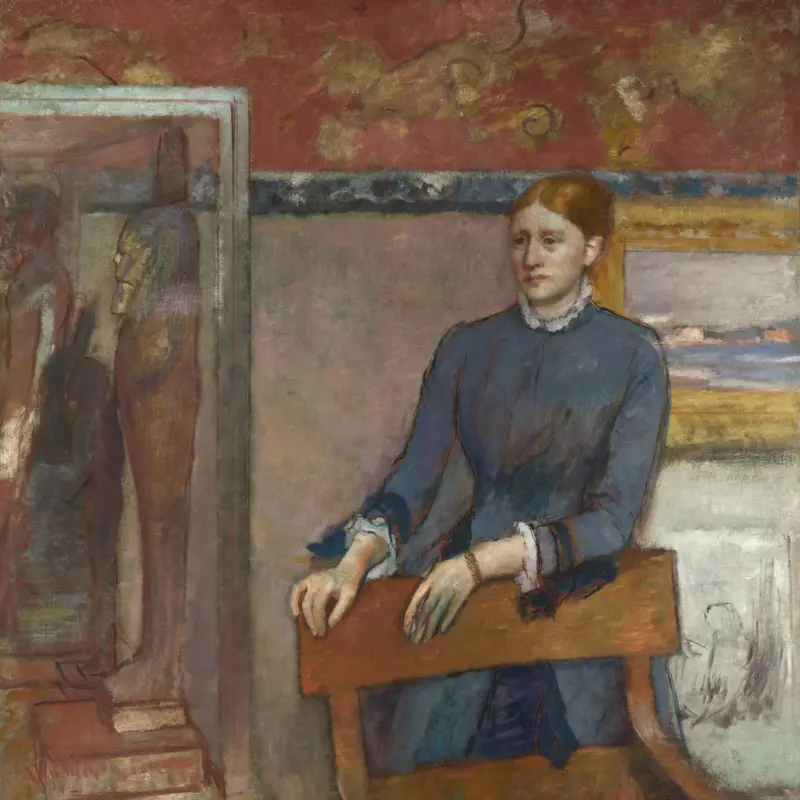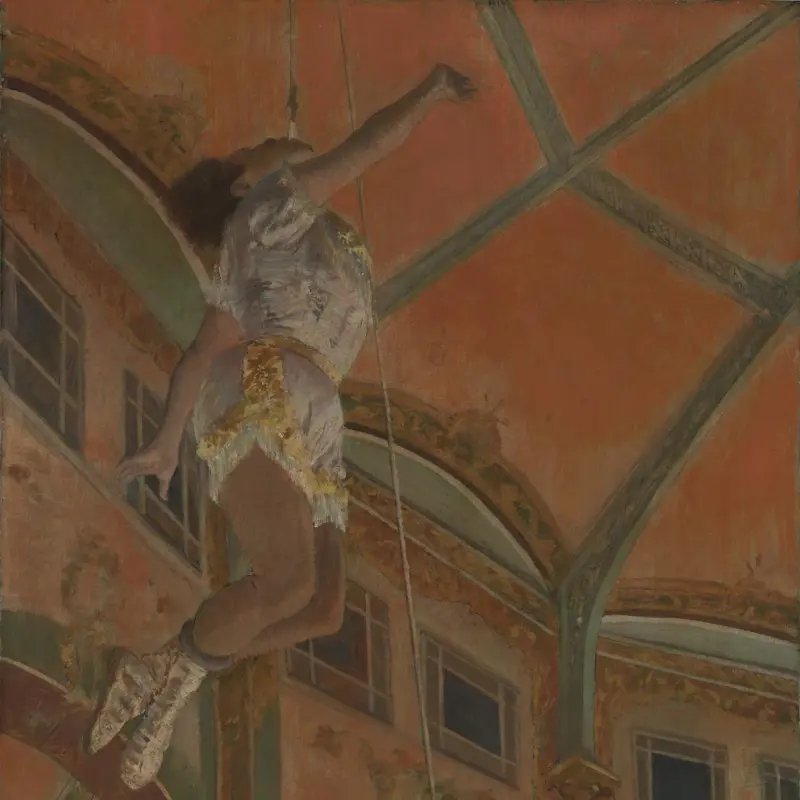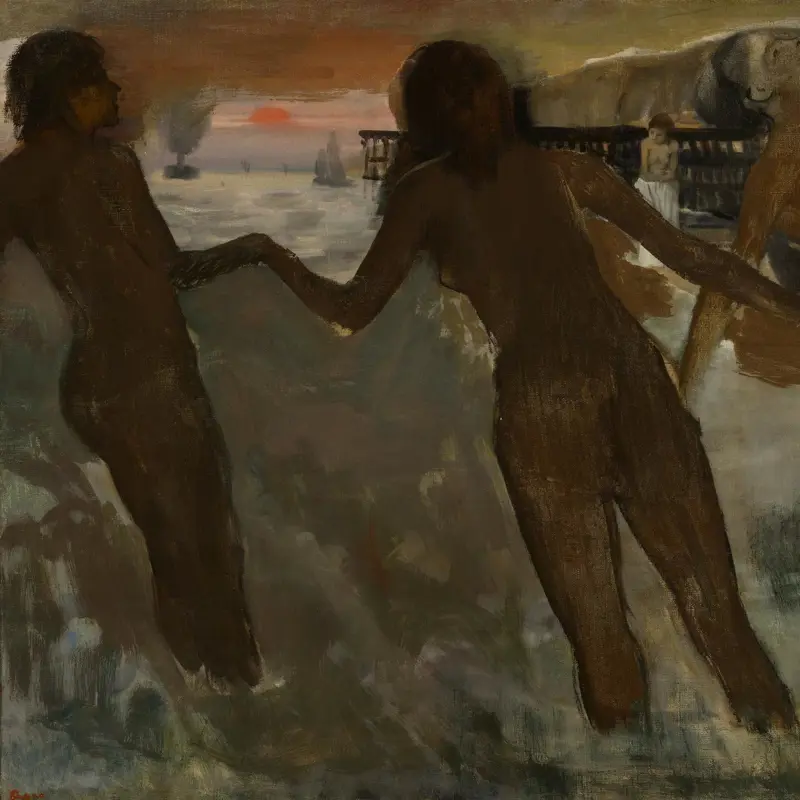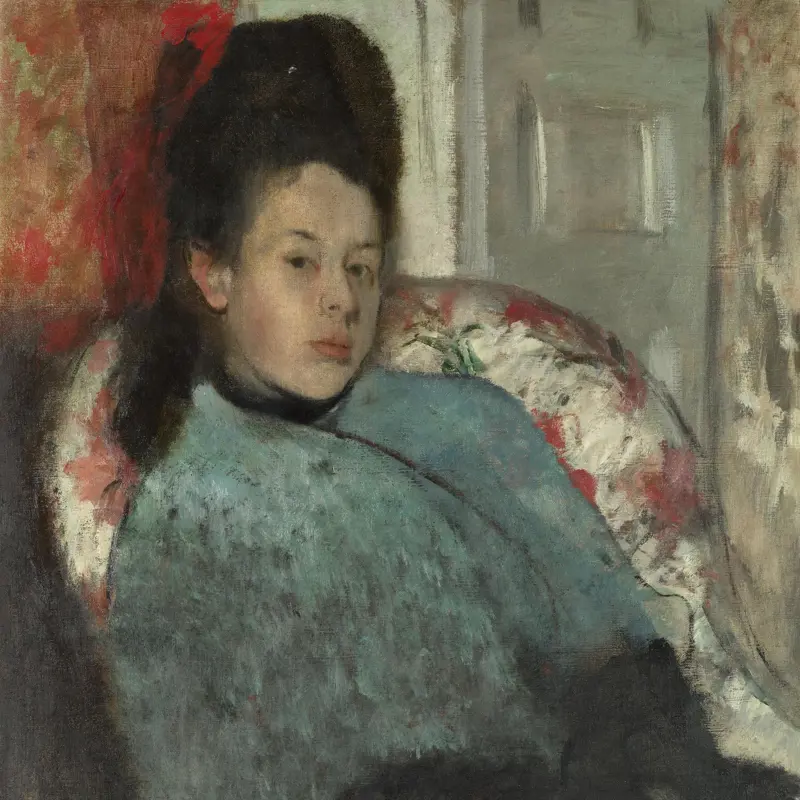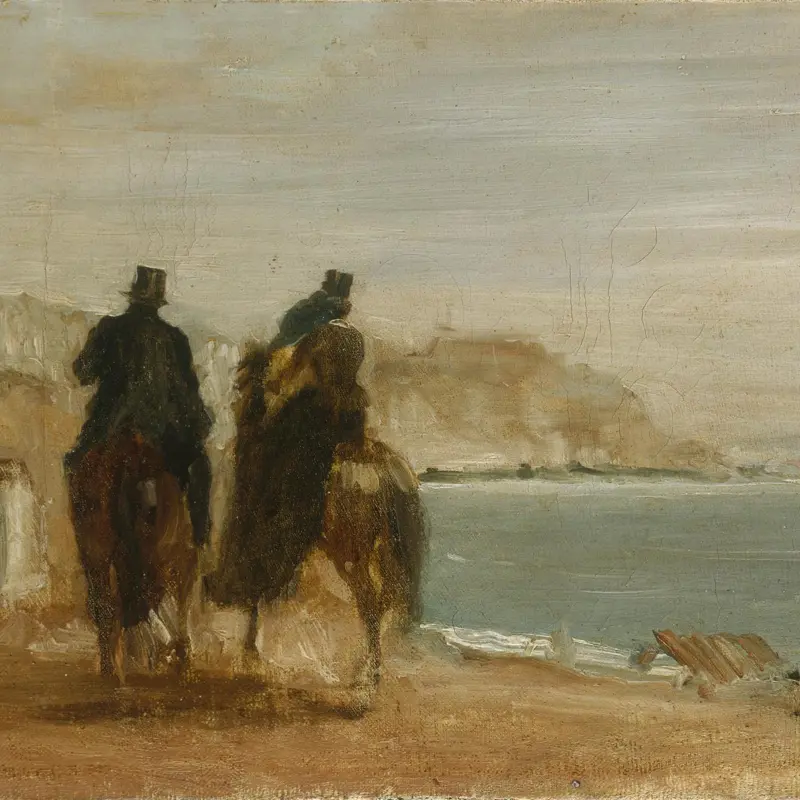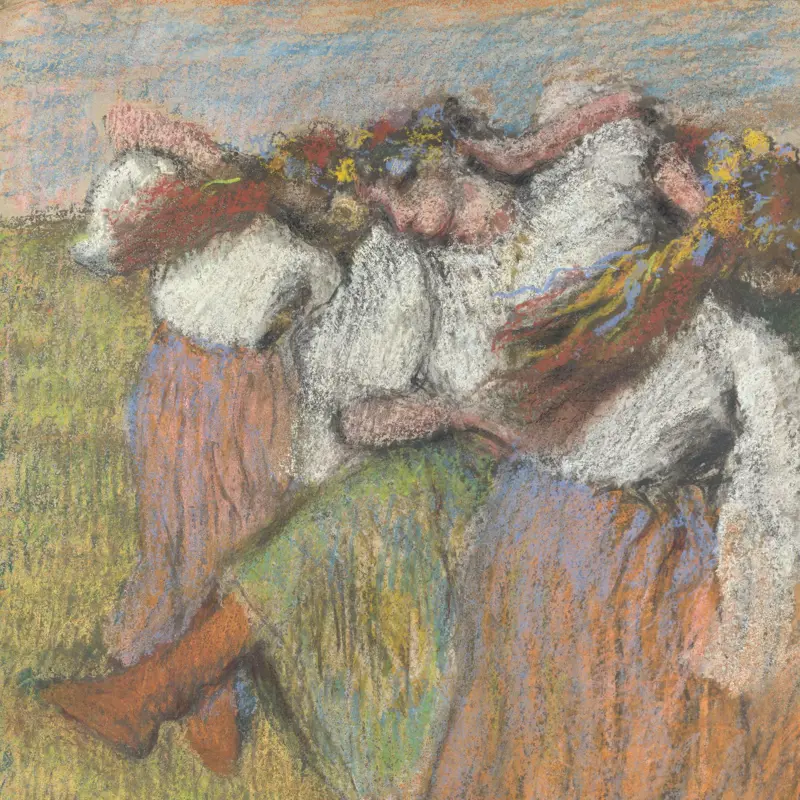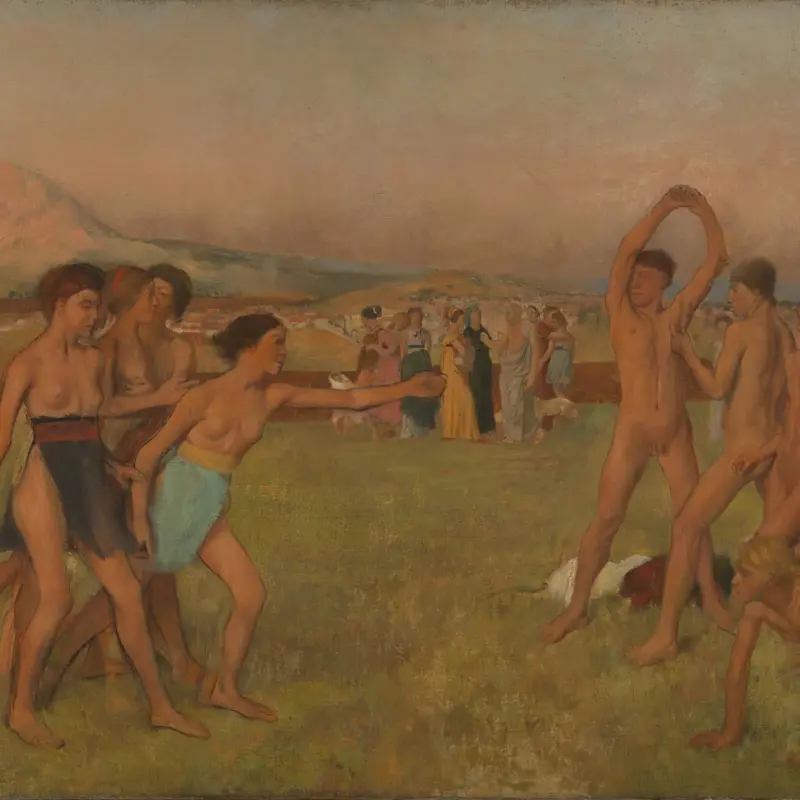Hilaire-Germain-Edgar Degas, 'Princess Pauline de Metternich', about 1865
About the work
Overview
Princess Pauline Sander (1836–1921) was the wife of Prince Richard Metternich, the Austro-Hungarian Ambassador at the court of Napoleon III from 1860 to 1871. Known as the ‘ambassadress of pleasure’, she was a glamorous figure in Parisian high society during the Second Empire. A pioneer of fashion, she promoted new styles of dress, including the crinoline.
The Princess had already been painted by the society portraitist Franz Xaver Winterhalter, and by the French seascape artist Eugène Boudin. However, Degas, who was still a young artist, did not paint his portrait of the Princess from life. Instead, he made a partial copy of a full-length visiting card photograph of her and her husband taken around 1867.
This is one of the first painted portraits to have been based on a photograph, and Degas makes no attempt to disguise its origin. Unlike the sharply focused photograph, however, Degas’s painting conveys the effect of blurred movement, as if the Princess has just been caught turning her head.
Key facts
Details
- Full title
- Princess Pauline de Metternich
- Artist
- Hilaire-Germain-Edgar Degas
- Artist dates
- 1834 - 1917
- Date made
- About 1865
- Medium and support
- Oil on canvas
- Dimensions
- 41 × 29 cm
- Acquisition credit
- Presented by the Art Fund, 1918
- Inventory number
- NG3337
- Location
- Room 41
- Collection
- Main Collection
- Frame
- 18th-century French Frame
Provenance
Additional information
Text extracted from the ‘Provenance’ section of the catalogue entry in Martin Davies, with additions and some revisions by Cecil Gould, ‘National Gallery Catalogues: French School: Early 19th Century, Impressionists, Post-Impressionists, etc.’, London 1970; for further information, see the full catalogue entry.
Exhibition history
-
2016The Spectacular Second Empire, 1852-1870Musée d'Orsay26 September 2016 - 16 January 2017
-
2018One Unbroken StreamNational Portrait Gallery (London)3 March 2018 - 2 September 2018
-
2023Blur in PhotographyMusée de l'Elysée1 March 2023 - 21 May 2023
Bibliography
-
1919'National Art Collections Fund Annual Report, 1918-19', National Art Collections Fund Annual Report, 1919
-
1937J. Rewald, 'Un portrait de la Princesse de Metternich par Edgar Degas', L'Amour de l'Art, 1937
-
1946Martin Davies, National Gallery Catalogues: French School, London 1946
-
1946P.-A. Lemoisne, Degas et son oeuvre, Paris 1946
-
1949H. Schwarz, 'Art and Photography', Magazine of Art, 1949
-
1955Adhémar et al., Un siècle de vision nouvelle (exh. cat., Bibliothèque nationale, 4 May 1955 -16 May 1955), Paris 1955
-
1957Martin Davies, National Gallery Catalogues: French School, 2nd edn (revised), London 1957
-
1966O. Stelzer, Kunst und Photographie, Munich 1966
-
1968A. Scharf, Art and Photography, London 1968
-
1970Davies, Martin, and Cecil Gould, National Gallery Catalogues: French School: Early 19th Century, Impressionists, Post-Impressionists etc., London 1970
-
1970J.A. Schmoll Gen. Eisenworth, Malerei nach Fotografie von der Camera Obscura bis zur Pop ArtKgl. Gemäldegalerie zu Cassel, Munich 1970
-
1974J. Lassaigne and F. Minervino, Tout l'oeuvre peint de Degas, Paris 1974
-
1979I. Dunlop, Degas, London 1979
-
1983A. Terrasse, Degas et la photographie, Paris 1983
-
1986D. Sutton, Edgar Degas: Life and Work, New York 1986
-
1989D. Sutton, 'The Degas Sales and England', The Burlington Magazine, CXXXI/1033, 1989, pp. 266-72
-
1989R. Kendall, Degas: Images of Women (exh. cat. Tate Liverpool, 21 September - 31 December 1989), Liverpool 1989
-
1996J.S. Boggs, Degas, Chicago 1996
-
2001
C. Baker and T. Henry, The National Gallery: Complete Illustrated Catalogue, London 2001
-
2004D. Seward, Eugènie: The Empress and Her Empire, London 2004
-
2004D. Bomford et al., Degas (exh. cat. The National Gallery, 10 November 2004 - 30 January 2005), London 2004
About this record
If you know more about this work or have spotted an error, please contact us. Please note that exhibition histories are listed from 2009 onwards. Bibliographies may not be complete; more comprehensive information is available in the National Gallery Library.

